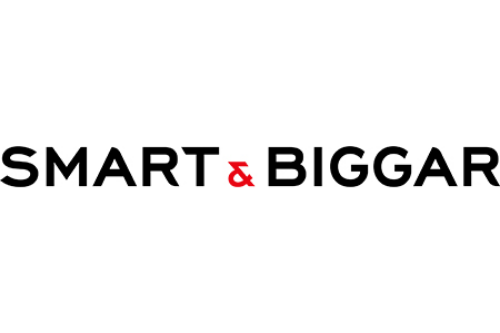A key component of any effective brand protection strategy is an anti-counterfeiting program. How can a brand owner protect its reputation and rights against counterfeiters, infringers and pirates? The answer will depend not only on the brand owner’s industry, but also on its channels of trade, goods and services.
Counterfeiting, a multi-billion-dollar problem, poses a serious threat to all brand owners, irrespective of their industries. Counterfeiters do not discriminate when it comes to manufacturing fake goods; if a brand owner is profiting from the commercial sale of the genuine article, chances are its goods will draw the attention of counterfeiters. Here are ten essential considerations for creating a robust anti-counterfeiting program.
Table of contents
- Do your homework
- Make a list of priorities
- Go on the record
- Collaborate with others
- Know your audience
- Keep an eye on your budget
- Develop tell-tale indicia of genuine articles
- Pick your battles
- Take action
- Know when to call for backup
1. Do your homework
The foundation of any effective anti-counterfeiting program is actionable intelligence. Before you create an anti-counterfeiting program, gather, analyze and synthesize intelligence. Investigations and market sweeps can offer brand owners a glimpse into the state of the local marketplace, and help you identify what is being knocked off and by whom. Your clients and customers are also an excellent source of valuable information. Pay attention to customers’ comments and complaints – persons who buy what they believe to be a genuine article may later realize that it is fake and tell you all about it.
2. Make a list of priorities
Your resources are finite. It is therefore necessary to prioritize. Identify the jurisdictions of greatest concern (e.g., those jurisdictions in which you enjoy the greatest market share, the highest revenue or the highest volume of sales), and the products that are most likely to be knocked off (i.e., typically, but not always, your best-selling goods). Focus your energies (and resources) on those jurisdictions and products.
3. Go on the record
Recording one’s rights is among the most important steps towards implementing an effective anti-counterfeiting program. A brand owner can (and should) record their trademark rights with the Trademarks Office (by filing trademark applications), the Canada Border Services Agency (CBSA) (by filing a Request for Assistance) and the Amazon Brand Registry. Each recordal serves a different purpose. For example:
- a trademark application that proceeds to registration affords the registrant the rights to the exclusive use of the trademark in Canada in respect of those goods and/or services described in the registration, and to assert causes of action under Canada’s Trademarks Act that are available only to owners of registered trademarks, such as trademark infringement and depreciation of goodwill;
- a Request for Assistance notifies the CBSA of the brand owner’s rights, and empowers the frontline workers at the CBSA to detain (and, with the importer’s permission) destroy any commercial shipments that contain goods suspected of infringing the brand owner’s intellectual property rights; and
- a recordal on the Amazon Brand Registry permits the brand owner access to a specialized suite of anti-counterfeiting tools to protect your own listings and stop bad listings before they are published online.
Brand owners battling counterfeiting may also benefit from expedited examination at the Trademarks Office, which will examine a brand owner’s trademark application in 5-10 business days if the brand owner has established an urgent need for a trademark registration for the purpose of litigation, or recording its rights with the CBSA or online marketplaces (such as Amazon).
4. Collaborate with others
Thankfully, you are not alone in the battle against counterfeiters. Other brand owners are here to help. Do not hesitate to share information (about known infringers, recent investigations, seizures, etc.) with competitors, who may return the favour. Counterfeiting does not harm individual brand owners within a given industry so much as the industry itself, so teamwork is not only mutually beneficial, but also often rewarded with results. Occasionally, your sharing information with other brand owners may lead to joint investigations into and actions against counterfeiters, which are cost-effective ways of protecting your respective brands.
5. Know your audience
It is also important to share information with law enforcement officials, including the frontline workers at the CBSA who are responsible for inspecting incoming and outgoing commercial shipments. Since these individuals may inspect hundreds of shipments in a given day, it is crucial to provide them with well-organized information and easy-to-understand diagrams or graphics to help them identify and detain counterfeit goods travelling into Canada. For best results, such information and diagrams or graphics should fit on a single page in Canada’s two official languages: English and French.
6. Keep an eye on your budget
Easier said than done, but critically important, nonetheless. The sheer volume of counterfeiting these days is such that you cannot reasonably address every infringement in a given jurisdiction without breaking the bank; you must pick your battles (see No. 8, below). Allocate a budget for anti-counterfeiting measures and minimize costs by implementing cost-effective practices. For example:
- conduct in-house, “desktop” investigations into online counterfeiters, rather than hiring investigative firms to do the same, before retaining outside counsel;
- draft demand letters in-house, and establish workflows with repositories of preapproved precedent letters and pleadings, for your and outside counsel’s use; and
- record your rights with customs officials (see No. 3, above), who will inspect and detain commercial shipments of suspected counterfeit goods on your behalf, without charge.
7. Develop tell-tale indicia of genuine articles
Brand owners can protect themselves from counterfeiters by applying indicators to help customers distinguish a genuine article from a fake. These indicators are relatively easy and inexpensive to apply to your goods, but difficult for counterfeiters to replicate. Popular examples include serial numbers or QR codes (with online verification), holographic stickers, and photoluminescent or UV inks. Such indicators can also help law enforcement officials, including the frontline workers at the CBSA, in identifying and detaining counterfeit goods.
8. Pick your battles
Finite resources, including personnel, budget and time, will naturally constrain your anti-counterfeiting program, so you must be efficient and strategic in your use of such resources. Focus on identifying “high-value targets” that are worthy of your resources, such as high-volume importations and recidivist activity by known counterfeiters, which may attract larger awards of damages, including both compensatory and exemplary/punitive damages, should you decide to take Court action against them. Those cases in which your relevant rights are registered, the evidence of infringement is abundant and clear, and the infringement itself is extensive are best suited for Federal Court applications, streamlined litigation proceedings in which costs, damages and permanent injunctive relief may be obtained within a years’ time, without having to undergo discovery of the parties.
9. Take action
Once you have identified a counterfeiter that poses a serious threat to your brand protection strategy, take action. An anti-counterfeiting program is useless if you do not take any steps to actually enforce your rights. While a brand owner is not obligated to police and enforce its rights, its failure to do so may lead to a loss of distinctiveness and a loss of rights. Furthermore, vigilant policing and enforcement of such rights may dissuade counterfeiters from further infringement, and help to establish your brand as a “hard target”.
10. Know when to call for backup
The battle against counterfeiters can be overwhelming at times. Brand owners who lack the experience and resources to combat counterfeiters should seek outside counsel who have experience working with law enforcement officials and expertise in anti-counterfeiting and enforcement strategies. Knowledgeable counsel can help you not only develop and implement an effective anti-counterfeiting program, but also act on it, and take steps to defend your reputation and enforce your rights.
When it comes to brand protection, developing an effective anti-counterfeiting program is essential to safeguarding a brand owner's reputation and intellectual property rights in both local and online marketplaces. Think of these ten considerations as the building blocks of a robust anti-counterfeiting program. With the assistance of outside counsel, they should help all brand owners, irrespective of their industries, to strengthen their brands’ integrity.
If you have any questions or require any additional information, please contact a member of our Trademarks and Brand Protection team.
***
 Graham Hood is a Principal and Trademarks Practice Group Leader in the Smart & Biggar’s Toronto office. Graham is a skilled trademark lawyer who helps brand owners protect, manage and monetize trademark portfolios. His counsel is sought after by brand owners focused on building and protecting their brands and reputations through efficient trademark clearance and prosecution. He regularly advises clients on effective strategies to manage and monetize their trademark portfolios and has successfully enforced clients’ trademark rights in Canada’s federal and provincial courts. Graham’s practice spans all aspects of trademark counselling, prosecution and litigation.
Graham Hood is a Principal and Trademarks Practice Group Leader in the Smart & Biggar’s Toronto office. Graham is a skilled trademark lawyer who helps brand owners protect, manage and monetize trademark portfolios. His counsel is sought after by brand owners focused on building and protecting their brands and reputations through efficient trademark clearance and prosecution. He regularly advises clients on effective strategies to manage and monetize their trademark portfolios and has successfully enforced clients’ trademark rights in Canada’s federal and provincial courts. Graham’s practice spans all aspects of trademark counselling, prosecution and litigation.





